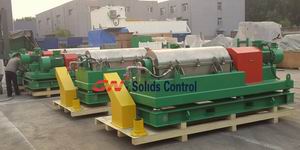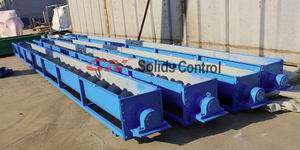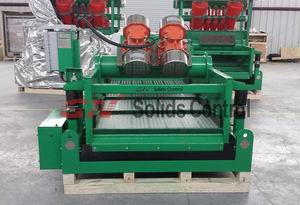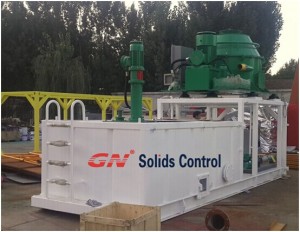GN has promoted the 4th generation of the vertical cuttings dryer. After few-year upgrade on the structure and perfection on the design, GN’s vertical cuttings dryer could be applied in both the water base mud and oil base mud drilling waste cuttings drying projects.
Generally, the drilling waste cuttings processing job requests a complete system that will involve the cuttings transfer equipment, drying equipment, liquid storage vessel , liquid transferring device as well as the ultra fine solids removing unit.
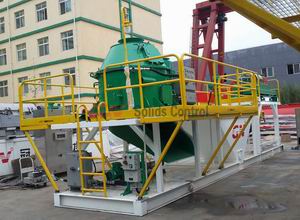
Some customer prefer to getting a complete cuttings drying system from GN. GN cuttings drying system is designed as a skid mounted tank and frame stand system. In this system, there are the vertical cuttings dryer and high speed decanter centrifuge that are located on 2 ends of the skid and supported by the frame. The cutting dryer is fed with the sick cuttings via the screw conveyor. Besides the screw conveyor, the hose pump can also be used to deliver the cuttings from the primary solids control equipment like shale shaker and mud cleaner. Sometimes, the cuttings are coming from several different sites and collected to be transported to a facility for treatment. Under the cuttings dryer, there is a chute that is used to guide the dry cuttings to the collection box after separated by the dryer unit. And the liquid would flow into the V-type storage tank waiting for further treatment. The liquid is transferred to the high speed centrifuge by the screw pump and there the fine solids would be removed out. By locating the dryer and centrifuge on the frame, it is easy for solids removing through the under installed chute.
Some customer may only request the cuttings dryer unit if the already have the centrifuge. GN could also provide the single cuttings dryer unit on the frame. And the customer could connect with their existing slurry transferring device and centrifuge unit to make it a complete waste cuttings management system.

GN’s vertical cuttings dryer is always equipped with a screw pump that is used to flush the screen inside the dryer to avoid blocking. This pump is located on the skid but under the frame to save the space. The customer could choose to use the fixed speed or variable speed model for the cuttings dryer and centrifuge, if VFD model is selected, the control panel could be located un the frame which is also easy for transportation.

